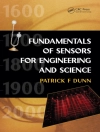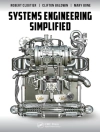When a biomaterial is placed inside the body, a biological response is triggered almost instantaneously. With devices that need to remain in the body for long periods, such interactions can cause encrustation, plaque formation and aseptic loosening on the surface. These problems contribute to the patient’s trauma and increase the risk of death. Electrical properties, such as local electrostatic charge distribution, play a significant role in defining biological interactions, although this is often masked by other factors. This book describes the fundamental principles of this phenomenon before providing a more detailed scientific background. It covers the development of the relevant technologies and their applications in therapeutic devices such as MRSA-resistant fabrics, cardiovascular and urological stents, orthopaedic implants, and grafts. Academic and graduate students interested in producing a selective biological response at the surface of a given biomaterial will find the detailed coverage of interactions at the nanometre scale useful. Practitioners will also benefit from guidance on how to pre-screen many inappropriate designs of biomedical devices long before any expensive, animal or potentially risky clinical trials. Enhanced by the use of case studies, the book is divided in to four topical sections. The final section is dedicated to the application of related topics making the book unique in its pragmatic approach to combining high end interdisciplinary scientific knowledge with commercially viable new technologies. Contributing to the newly emerging discipline of ‘nanomedicine’, the book is written not only by experts from each relevant specialty but also by practitioners such as clinicians and device engineers from industry.
विषयसूची
Electrostatic Charge on Biomaterials Surface;
Electrical modifications of biomaterials’ surfaces: Beyond hydrophobicity and hydrophilicity;
Photocatalytic effects in doped and undoped titania;
Surface charge measurements on biomaterials in dry and wet conditions Measurements of surface and interfacial charge and morphology in electrically modified materials;
Protein Interactions at the surface;
Immobilisation of enzymes on porous surface;
Fibrous proteins interactions with modified surfaces of biomaterials;
Antibody immobilisation on solid surfaces: methods and applications;
Cellular Interactions with Abiotic Surfaces;
Interactions of bone forming cells with electrostatic charge at biomaterials surface;
Interactions of biofilm-forming bacteria with abiotic surfaces;
Endothelial cells and smooth muscle cells (SMC) interactions at biomaterials surfaces;
Interactions of Bacteria and fungi at the surface;
Immunological response of electrostatic charge at the surface of biomaterials;
IV. Applications;
Community and hospital acquired Staphylococcal infections;
MRSA resistant textiles;
Inhibition of urological devices;
Encrustation;
Reduction of restenosis in cardiovascular stents;
Regulatory and safety issues related to biomedical devices
लेखक के बारे में
Dr. Syed Tofail, Ph D, MSc Eng., BSc Eng., is a Senior Research Fellow with the Materials and Surface Science Institute, University of Limerick, Ireland. He has about 10 years experience in the development and characterisation of nano- and biomaterials. His major research accomplishment is establishing the correct crystal symmetry of hydroxyapatite, a leading synthetic biomaterial. This led him to the discovery of piezoelectricity in synthetic hydroxyapatite. Dr. Tofail is skilled in conducting fundamental research in the field of materials and surface science with the aim of developing medical devices with new functionality. For this, he works closely with relevant industrial players. Dr. Tofail is currently coordinating a European Commission Framework 7 project funded under the Nanotechnology, Materials and Processing (NMP) programme. One of the core objectives of this project is to develop MRSA-resistant medical textiles. In addition, the project will also develop implantable devices for cardiovascular, orthopaedic and urinary applications.












